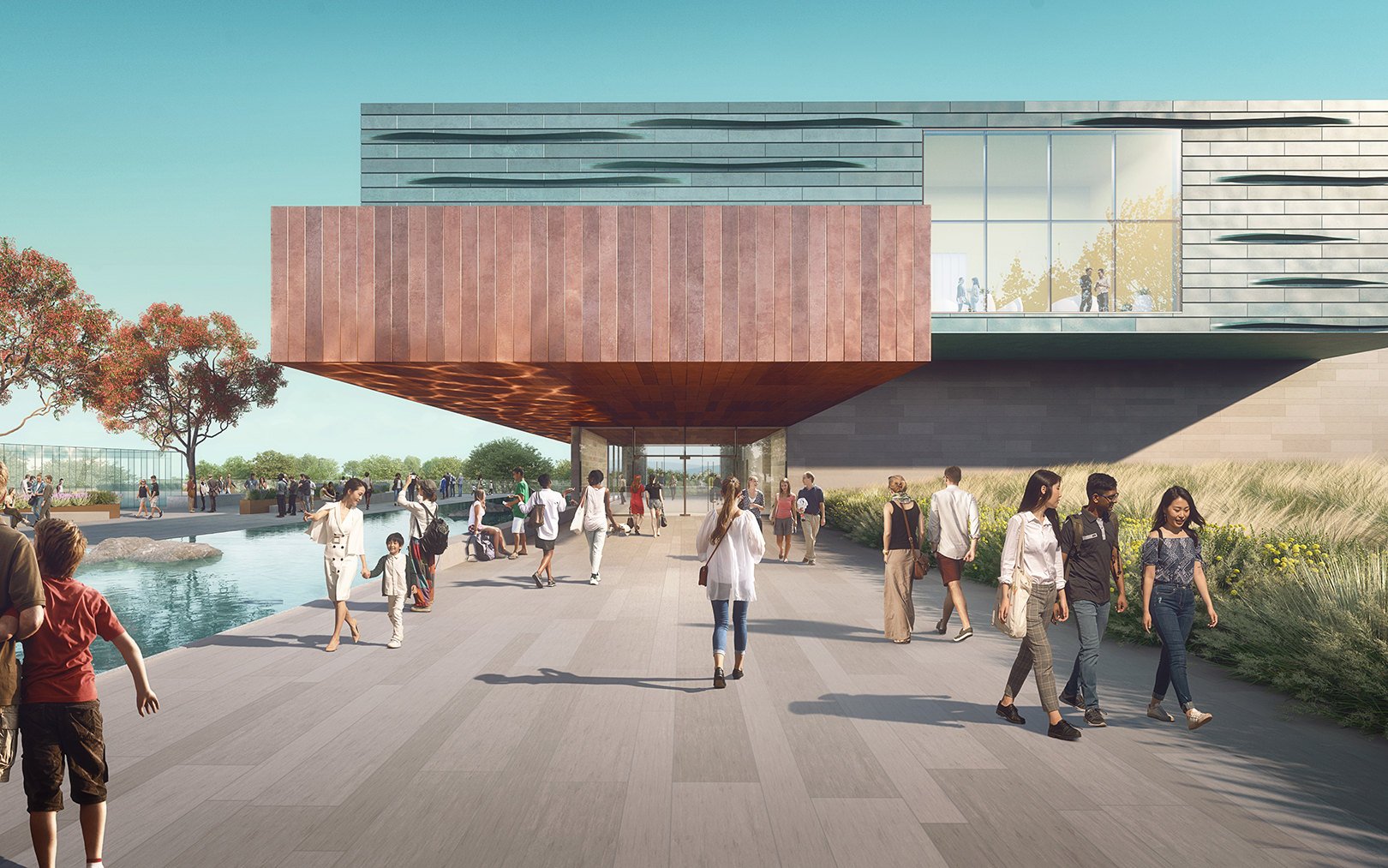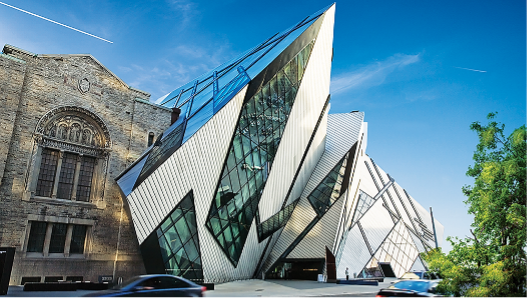GILCREASE MUSEUM
DIRECTOR OF CURATORIAL AFFAIRS
Tulsa, OK
Deadline Application: CLOSED
Gilcrease Museum, formally known as the Thomas Gilcrease Institute of American History and Art, seeks a Director of Curatorial Affairs (DCA) to provide leadership, stewardship, and strategy as a member of the Museum’s leadership team. The Museum houses a comprehensive collection of the art, culture, and history of the Americas. The DCA will play a vital role in the Museum’s history as it moves into a new 84,000-square-foot state-of-the-art facility, projected to open late 2026.
Gilcrease Museum
Gilcrease Museum was founded in 1949 as a private museum by Tulsa oilman Thomas Gilcrease (1890-1962), who amassed one of the nation’s most important collections of art of the American West, as well as major collections of historical documents and artifacts.
Thomas Gilcrease was a citizen of the Muscogee Creek Nation and also of European ancestry, a background that propelled his avid collection of objects that reflected both Native American history as well as non-Native culture. Beginning in the 1930s, Gilcrease made a string of acquisitions that vaulted him to the forefront of American art collectors, purchasing thousands of works that included significant Frederic Remington paintings, the finest collection of Charles Russell works acquired during the artist’s lifetime, the estate of noted landscape painter Thomas Moran, and Native American artists Acee Blue Eagle, Woody Crumbo, and Willard Stone.
Today, the interdisciplinary collection contains more than 350,000 items, more than 60% of which represent Indigenous cultures across North and South America, with objects ranging from 12,000 BCE to the 21st century. The art collection includes more than 350 years of American paintings, sculptures, and works on paper, including the largest public holdings of art of the American West.
The Museum is located on 460 acres of gardens and grounds which include the Helmerich Center for American Research. The Center houses the Gilcrease Library and Archive with manuscripts, maps, rare books, and other works related to the history of North America dating to the 15th Century.
In July 2021, Gilcrease Museum began a five-year project to build an entirely new facility which reimagines the museum from the ground up. The 84,000-square-foot building will create new opportunities for Gilcrease to explore broad, complex stories of American history, art, and culture. The new Museum will present a much-improved visitor experience and state-of-the-art exhibition space meeting today’s standards for care of the collection and touring exhibitions.
The Museum has a hybrid governance and management structure. The facility and collection are owned by the City of Tulsa and managed by agreement with the University of Tulsa, which employs museum staff. A six-member Board of Trustees affiliated with the City of Tulsa oversees the collections, building, and finances, while a joint 11-member City/University Advisory Board assists with management and fundraising. Gilcrease also has a 25-member Community Advisory Committee to help with local engagement and JEDAIS (justice, equity, diversity, accessibility, inclusion and sovereignty) work.
The Museum is currently served by 29 staff members divided into the following departments: Curatorial Affairs, Learning & Community Engagement, Collections & Registration and Visitor Engagement. Departments of Development and Marketing are shared with the University of Tulsa. The Director of Curatorial Affairs will have three direct reports: a Curator of Indigenous Art & Culture, an Associate Curator of Culture & Community Engagement, and an Assistant Curator of Special Projects; three additional curatorial positions are anticipated in the coming months. Also supporting the Museum is a corps of 250 volunteers known as the “Gillies.” This group is a key resource for educational tours, visitor information, and ambassadorship.
The overall Museum budget is currently $5.8 million, due to increase substantially with completion of the new facility. Pre-Covid annual attendance was approximately 85,000. Since the Museum’s closing in 2021, it has developed partnerships with community organizations to produce Gilcrease in Your Neighborhood, which in 2023 attracted an estimated 350,000 people to art installations throughout the city.
The Opportunity
The Director of Curatorial Affairs will join Gilcrease Museum at an exciting time of expansion, reimagination, and positive energy. Following a successful capital campaign which supported the construction of the new $140-million, 84,000-square-foot facility, the Museum is on an unprecedented trajectory to engage its audiences, find relevance in the Greater Tulsa region, and build sustainability to benefit coming generations. The DCA, acting as a key strategic partner to the Museum’s new Executive Director, Brian Lee Whisenhunt, will focus on several initiatives that contribute to the organization’s future:
Oversee curatorial logistics of opening the new Museum by fall 2026, consisting of 15 permanent and temporary exhibition galleries with thousands of objects.
Strategize and implement expansion of the curatorial department, hiring an anticipated three new curators by 2026 and mapping the ongoing reinterpretation of the Museum’s collection.
Contribute to a Museum-wide strategy for deeper engagement with Tribal Nations, Tulsa’s Black community, and with University of Tulsa faculty and students.
Contribute to AAM reaccreditation process in 2025, evaluating and creating curatorial policies and procedures including a collections catalogue and acquisition plan.
Responsibilities and Expectations
Senior Team Leadership
Participates in setting the Museum’s long-term goals and ensures they are carried out for the curatorial department.
Builds audiences, extends community outreach, and maintains relationships locally, regionally, and nationally to further the Museum’s reputation.
Oversees participation of the curatorial department in cross-institutional collaborative teams and strategic initiatives.
Serves as an active participant in long-term financial planning; oversees the annual budgeting process of the curatorial department and ensures budget guidelines are followed.
Serves as an advocate for the curatorial department within the Museum and acts as the Museum’s primary curatorial spokesperson with the media and public.
Curatorial Team Leadership and Management
Coordinates curatorial logistics of installing permanent and temporary exhibits in Museum galleries, supporting the curatorial team as the new facility opens in fall 2026.
Nurtures a curatorial team that interacts with trust, respect, and teamwork in an environment that values collegiality, support, and empathy.
Provides strategic planning and oversight for Museum’s exhibition program, including multi-year schedule, budget, and development of changing exhibitions of various scales as well as promoting and negotiating outgoing traveling exhibitions to other museum venues.
Hires, trains, supervises, and mentors direct reports.
Supervises the curatorial team in ongoing efforts to reinterpret the collections to create a more holistic, story-based, and inclusive presentation of the Museum’s holdings.
Oversees the Museum’s acquisition program and budgets; works with curators across all stewardship areas to continue development of the collection.
Supports and amplifies the Museum’s commitment to justice, equity, diversity, access, inclusion, and sovereignty. Hosts regular listening sessions and develops meaningful collaborations with Tribal Nations and Tulsa-area community groups to maximize impact on the Museum’s exhibitions and collections.
With the Executive Director, department heads, and curatorial team, formulates the Museum’s acquisitions strategy, and establishes conservation and collection-development priorities.
Works closely with the development department to cultivate philanthropic giving and to develop strategy; participates in institutional giving activities including grants and sponsorships in support of programs.
Serves as project director for grants secured for the curatorial department.
Experience, Skills, and Attributes
Minimum seven years of experience in a senior curatorial role, preferably in American art.
Experience in cultivating community partnerships to build inclusive interpretative practices.
Sound financial planning and management abilities including successful administration of a department budget.
Demonstrated leadership, supervisory, project management, and mentoring skills.
Demonstrated ability to think strategically. Experience in developing long-term strategy and goals in collaboration with cross-departmental teams.
Interpersonal skills; works effectively with people at all levels, including board members, collectors, donors, and other external stakeholders.
Strong written and oral communication skills; experience with public presentations and media relations.
Technical literacy in curatorial research, productivity tools, and digital interpretation.
Experience with academic and/or curatorial research, writing for diverse audiences, and editing academic publications.
Academic degree in art history or relevant field.
Research shows that women and individuals from under-represented backgrounds often apply to jobs only if they meet 100% of the qualifications. We recognize that it is highly unlikely that an applicant meets 100% of the qualifications for a given role. Therefore, if much of this job description describes you, then you are highly encouraged to apply for this role.
Compensation
The salary range is $105,000 - $115,000 commensurate with experience, plus benefits including health insurance and retirement plan contribution.
How to Apply
To apply in confidence, submit application by October 3, 2024, to: Dan Yaeger, Senior Search Consultant, Museum Search & Reference, via SearchandRef@museum-search.com.
Please include:
1) A cover letter expressing interest in the position and giving brief examples of past related experience.
2) A résumé.
3) The names and contact information for three professional references, indicating their relationship with the candidate.
Applicants are encouraged to apply early, as candidates will be considered on a rolling basis. All applications and nominations are kept confidential; we will not contact references without your permission. Nominations are welcome. For more details, visit: www.museum-search.com/open-searches.
About Tulsa, Oklahoma
Tulsa is a lively and diverse city with a metro population of more than one million, with a vibrant city center dotted with public parks along the Arkansas River, and a thriving cultural scene. Located in the scenic northeastern part of the state, known as Oklahoma’s “Green Country” for its verdant landscape, Tulsa ranks as one of the country’s most livable cities. Most of the city is contained within the lands of three tribal nations: Osage Nation, Cherokee Nation, and Muscogee (Creek) Nation; overall Oklahoma is home to 38 Tribal Nations.
Vestiges of Tulsa’s early days as an oil boomtown are reflected in the Art Deco architecture throughout the city, including the famed Boston Avenue United Methodist Church, considered to be one of the finest examples of Art Deco church architecture in the U.S. The city’s built environment was also influenced by the iconic Route 66, which was the 1920s brainchild of Tulsa businessman, Cyrus Avery. Today, the city’s economy is a diversified mix of technology, aerospace, and services while still serving as headquarters to many oil- and gas-related companies.
Tulsa’s cultural mix is anchored by its two major museums, Gilcrease and the Philbrook Museum of Art, plus the Tulsa Botanical Garden, Oklahoma Aquarium, Tulsa Air & Space Museum, and Sherwin Miller Museum of Jewish Art. The Woody Guthrie center and adjacent Bob Dylan Archive represents Tulsa’s active musical landscape. The Greenwood Cultural Center interprets the city’s African American heritage, which includes the area known as Black Wall Street, which was tragically the center of the Tulsa Race Massacre of 1921.
Tulsa is home to professional baseball, hockey, and soccer teams. Plus, the University of Tulsa and Oral Roberts University offer NCAA Division 1 sports excitement as well as cultural events. The city is also home to more than 125 parks offering outdoor recreation, including The Gathering Place, a 67-acre public park along the Arkansas River that has been ranked #1by USA Today.
For all its amenities, the city offers a low cost of living, with housing prices about 25% less expensive than the national average. Tulsa is less than a two-hour drive from the state capitol, Oklahoma City, and is served by all major airlines through Tulsa International Airport.




